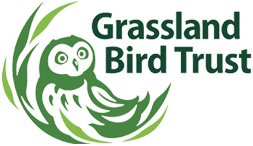FORT EDWARD The Snowy owl sprang from the crate and glided across the open field at Friends of the IBA’s (FIBA) Alfred Z. Solomon Grassland Bird Viewing Area. She glanced back once before landing on a fencepost at the edge of the property and sat there checking out her surroundings amidst the falling snow. She seemed relieved to be back in the wild as she took in her surroundings.
The owl was so emaciated when she was found dying of starvation this past May she didn’t react when her rescuer and his dog approached her, said North Country Wild Care rehabilitator Diane Hime.
Hime picked up the owl, a young female, after the call to the organization’s 24-hour wildlife hotline and brought it to Cara, a Vet Tech with over 18 years of experience rehabilitating sick or injured raptors.
Cara worked around the clock to save the owl’s life, administering fluids and tube feedings every four hours for three days, until the big raptor could take solid food on her own. Fortunately, she hadn’t been injured and did not show signs of pesticide poisoning.
“I couldn’t believe the difference,” said Hime when the owl was transferred to her care a week later. “She was actually feisty.”
“If an owl or other raptor can’t catch prey – whether because prey is scarce, or the bird is young and inexperienced – it soon loses the energy to hunt,” said Laurie LaFond, founder and Executive Director of Friends of the IBA (Important Bird Area). “Then it starves to death.”
Friends of the Washington County Grasslands IBA (FIBA) is a nonprofit land trust conserving critical habitat for endangered and threatened grassland birds. They are the only nonprofit acquiring and permanently protecting vital breeding and winter roosting areas for these birds in New York State.
The Washington County Grasslands IBA is critical to the survival of Short-eared owls in New York State. It supports nearly a dozen endangered, threatened and at-risk grassland bird species, including Snowy owls, and hundreds of other bird and animal species.
Snowy owls have been declining for at least the last two decades, primarily due to climate change. For example, in 1995 biologists counted 54 nests at one breeding site in Alaska. That number dropped to 38 in 2006, and last year there were only seven (and three of those nests failed to produce young). These majestic residents of the Arctic tundra are at risk of extinction if no conservation action is taken.
Learn what you can do to help at www.ibafriends.org
